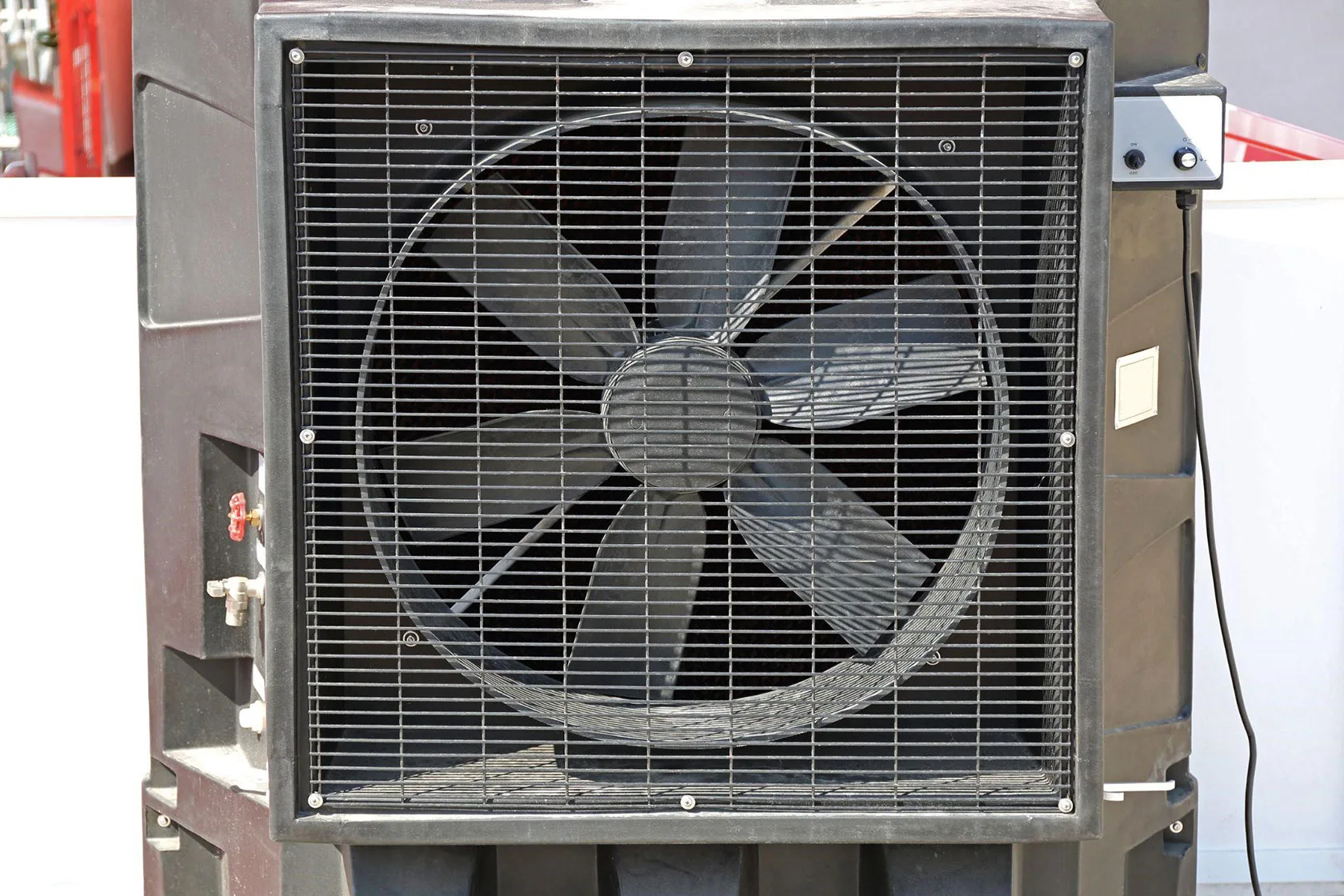Editorial Credit: Dreamstime.Com
Evaporative coolers, simple yet effective tools for achieving comfortable indoor temperatures, especially in dry, hot climates, have been rising in popularity due to their energy efficiency. However, with their use, questions regarding evaporative cooler water consumption and its impact have surfaced. Central to this is the importance of comprehending the water use related to these devices, as water scarcity looms larger each day. It’s pivotal, therefore, to grasp the implications of this water consumption on the environment and household utility bills, thus the creation of this guide.
This article expounds on evaporative coolers, the factors that influence their water consumption, and the process of measuring and reducing this water use. By the end of this read, the reader will better appreciate the art of efficient appliance usage and the role it plays in sustainable living.
What Is An Evaporative Cooler?
An evaporative cooler, also known as a swamp cooler, operates on the principle of evaporative cooling. When air moves over water, it causes evaporation, which in turn cools the air. This mechanism is the bedrock of the evaporative cooler’s operations.
The appliance consists of a fan that pulls warm air from the environment through water-soaked pads. The air’s temperature drops as it vaporizes the water in the pads, thus providing cooler, more humid air to the indoor environment. This property makes evaporative coolers particularly popular in arid climates, where the added moisture is welcome, a stark contrast to conventional air conditioners that work by reducing humidity.
Factors Influencing Water Consumption In Evaporative Coolers
Multiple factors contribute to the variance in the water consumption of evaporative coolers. Climate and weather conditions decidedly play a part, as hotter and drier climates necessitate more water for effective cooling. The settings of the appliance also influence water utilization; higher fan speeds and more frequent use lead to increased water consumption.
The model of the evaporative cooler, its efficiency specifications, and maintenance practices are other determinants. Older models typically consume more water than newer, more efficient ones. Regular cleaning and maintenance of the cooler ensure that it operates optimally, thus preventing wasteful water use.
Measuring Water Consumption Of An Evaporative Cooler
To assess the water consumption, one would require a water meter attached to the water supply line feeding the cooler. This water meter will track the volume of water utilized by the cooler in a specified period.
The interpretation of results may vary, but comparing the reading with the manufacturer’s standard consumption rates can provide a benchmark. Regular measurement and monitoring are critical to ensuring that the appliance performs efficiently.
How To Reduce Water Consumption In Evaporative Coolers
Regular maintenance is paramount to reducing water use. This includes cleaning the cooler and its pads, preventing any scaling or algae buildup that could impair the cooler’s water efficiency.
Finding the right settings to balance desired indoor temperatures and minimal water use is essential. You may also consider water-saving upgrades for your cooler, such as humidity controls or a programmable thermostat. Lastly, understanding that individual behaviors can impact water consumption, simply turning off the cooler when unneeded will also lead to water conservation.
Impact Of Lowered Water Consumption On Environment And Utility Bills
Reduced water consumption leads to lower utility bills – a boon for the household budget. On a broader scale, every liter of water saved contributes to the conservation of a precious resource, translating to a positive environmental impact.
Further, some case studies illustrate significant financial savings from reduced water use in evaporative coolers, reaffirming the benefits of mindful water consumption. Lastly, adopting water conservation practices with household appliances promotes sustainability, a gain on multiple fronts.
Conclusion
Understanding evaporative cooler water consumption is crucial in these times of increased environmental consciousness. Not only does it affect the household pocket by way of utility bills, but it also has far-reaching implications for our resource-constrained world.
As we march towards sustainable living, the responsible use of appliances such as evaporative coolers is essential. By maintaining appliances properly, using them as efficiently as possible, and being aware of the resources they consume, we can all contribute to a more sustainable future. Conscientious water usage with evaporative coolers is a drop in the ocean towards this goal but remember, every drop counts.







